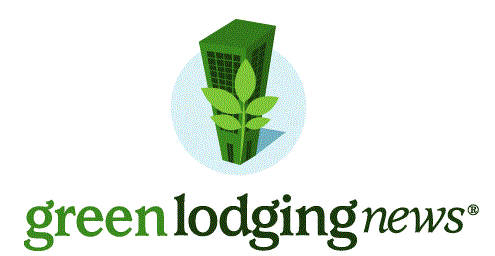
It remains more important than ever for a hotel to offer a product that stands out amid the competition. Hotel maintenance, which can be considered the combination of all activities necessary to keep hotel facilities and assets in prime condition, is an excellent and hands-on way to set a hotel apart.
Unfortunately, many hotel guests don’t appear happy in the post-COVID era, as found by the American Customer Satisfaction Index (ACSI) Travel Study 2021-2022. Hotels fared worse with their score of 71 in overall satisfaction than did online travel agencies, car rental companies, and airlines in the study, and had the steepest decline (-2.7 percent) compared to pre-pandemic numbers.
Also, from the ACSI study, the quality of hotel amenities only scored 69 with hotel guests, with only the quality of food services faring worse.
Hotel amenities are directly affected by maintenance factors. That is why well-integrated and forward-thinking hotel maintenance is clearly critical. This reality may require a fresh look at your hotel’s maintenance function. This article will explore what makes an effective hotel maintenance strategy and how to craft such a strategy.
Decide the Maintenance Focus
An excellent starting point for a hotel maintenance strategy is to decide between preventive maintenance and predictive maintenance or a blend of both. The definition for both types of maintenance lies in their respective names: preventive maintenance aims to prevent asset breakdowns by having planned maintenance schedules. Predictive maintenance aims to predict maintenance based on real-time monitoring and analysis of assets, rather than being bound to set schedules.
A good rule of thumb to differentiate the two is that preventive maintenance is time-based (i.e., at pre-planned, set intervals of time, say every six months), with predictive maintenance being condition-based (i.e., scheduled on the basis of the actual wear and existing lifespan of given assets). For example, a hotel may decide to use a preventive approach for less critical maintenance that can be done on a regular, planned basis, such as monthly checks of thermostats in the kitchens or checking for peeling paint or other aesthetic features in outdoor areas.
On the other hand, a predictive approach may be the option for critical maintenance, such as for heating, ventilation and air-conditioning (HVAC) systems or for fire sprinkler and suppression devices. It is generally accepted that preventive maintenance should be the standard for any maintenance that may have an impact on guest safety.
Be Comprehensive in Maintenance Choices
For starters, a maintenance strategy must include all the “basics” of hotel maintenance:
- Maintaining major building systems;
- Housekeeping tasks;
- Specialized maintenance work;
- Maintaining technical equipment;
- Maintaining room interiors; and
- Maintaining building exteriors and landscape.
Electrical systems and other safety-related devices and equipment, such as those for fire alarm, egress, and suppression, as well as security-related systems and alarms, need to also be considered in your maintenance strategy. Mechanical assets also need to be well-considered in maintenance planning, given that many guest complaints are related to hotel equipment malfunctions that are often mechanical in nature. These may include door keys and convenience-related equipment, such as vending machines, ice machines, or the in-room safe.
However, maintenance today goes beyond mere “brick and mortar issues.” Your maintenance strategy must consider factors beyond the conventional categories of maintenance. These may include sustainability-related factors that guests are taking increasingly seriously, such as your hotel’s carbon footprint in terms of energy usage, water conservation, and waste generation. “Deep hygiene” has become far more important in the aftermath of COVID-19, with more guests being responsive to properties that make visible and tangible efforts to address public health and hygiene factors.
Remember Housekeeping
The strategic importance of housekeeping for any hotel cannot be underestimated, especially when you consider that the “sale” of rooms and their allied services contribute a minimum of 50 percent of all sales for most hotels. Maintenance and housekeeping overlap enormously since maintenance-related factors can impact housekeeping, and vice-versa. To treat them as separate “silos” is pure folly, as any competent hotel manager knows.
However, the pandemic and ongoing tight margins for hotels have meant that housekeeping has seen industry-wide slashing in order to keep costs down. What was ostensibly a convenient way of ensuring social distancing between guests and housekeeping staff during the pandemic has become an industry norm.
What this means is an even greater burden on maintenance teams, since they can no longer as readily count on housekeeping staff to be their “eyes on the ground” regarding potential maintenance issues. That symbiotic relationship between the two functions is not as solid as before due to the trend of reduced housekeeping. Your maintenance strategy needs to therefore take this trend, if applicable to your hotel, into due consideration. For example, exactly how malfunctioning equipment in guestrooms comes to the speedy attention of maintenance staff now that there may be fewer housekeepers on duty needs to be seriously considered.
How to Craft a Maintenance Strategy
As with any strategy, a checklist of what to consider for your maintenance regime should be helpful. Factors or issues for consideration include:
- Undertake a thorough risk assessment of your current maintenance system, in terms of its strengths, weaknesses, and opportunities.
- Prioritize maintenance activities and needs according to your risk profile.
- Decide on what mix or extent of preventive and predictive maintenance your hotel will have.
- Invest in maintenance-specific software for scheduling and related functions, whether for preventive or predictive maintenance.
- Set primary and secondary maintenance objectives and targets for your maintenance regime.
- Ensure that objectives and targets are “SMART,” i.e., specific, measurable, achievable, relevant, and time specific.
- Devise a maintenance schedule that is unobtrusive yet practical i.e., preferably one that accommodates work periods and non-peak hours.
- Delegate and assign maintenance tasks based on the relevant skills base in your maintenance team.
- Review, review, review your maintenance strategy on a regular basis.
Very importantly, be inclusive: include as many inputs into your maintenance strategy as possible, particularly from maintenance employees. After all, they are at the “front lines” of maintenance in your hotel and can offer invaluable insights into what is working and what isn’t, and what is needed. The inputs of housekeeping staff should also be actively sought.
Even as profit margins for hotels get tighter, guests are more demanding than ever. The hotel experience remains aspirational for many guests, even in modest hotels. In the words of the Belgian fashion designer and socialite, Diane von Fürstenberg: “When you get into a hotel room, you lock the door, and you know there is secrecy, there is a luxury, there is fantasy. There is comfort. There is reassurance.” Your maintenance strategy does well to remember that.
About the Author
After pursuing a career in opera and classical music, Katie Sullivan transitioned career paths into marketing for arts non-profits. As Marketing Manager for Limble CMMS, Katie takes that same passion for positively impacting lives by letting maintenance teams know that there is an easier way to manage—and get credit for—their amazing work.







